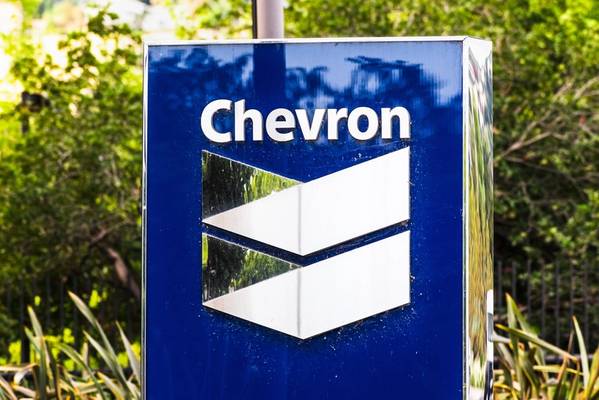
US supermajor Chevron announced Thursday it will move ahead with the high-profile Anchor project in the U.S. Gulf of Mexico, targeting first oil production in 2024.
The $5.7 billion deepwater project is the first ultra-high pressure development to reach a final investment decision (FID), Chevron said. It's also seen the first contract award for technology capable of handling pressures of 20,000 pounds per square inch (psi), according to Schlumberger, which has been awarded a contract on the project.
The Anchor field, located on Green Canyon block 807, about 225 kilometers off the coast of Louisiana, sits in approximately 1,524 meters water depth and is believed to hold more than 440 million barrels of potentially recoverable oil-equivalent resources.
Operator Chevron, which holds a 62.86% stake in the Anchor project, will develop the first phase as a seven-well subsea development tied to a semisubmersible floating production unit (FPU) with planned design capacity of 75,000 barrels of crude oil and 28 million cubic feet of natural gas per day. Partner Total holds the remaining 37.14% working interest.
The Anchor green light, Chevron’s first greenfield FID as an operator since Big Foot and Jack/St Malo in 2010, “shows that the US Gulf of Mexico still offers attractive investment opportunities for large greenfield developments,” said Justin Rostant, an analyst with Wood Mackenzie’s Gulf of Mexico team.
“While over 80% of projects sanctioned in the last five years are shorter-cycle subsea tiebacks, standalone developments like Anchor are still able to compete for development capital,” Rostant said.
“[The Anchor FID] reinforces Chevron’s commitment to the deepwater asset class,” said Jay Johnson, executive vice president, Upstream, Chevron Corporation. “We expect to continue creating value for shareholders by delivering standalone development projects and subsea tiebacks at a competitive cost.”
Steve Green, president of Chevron North America Exploration and Production, said, “For new projects in the Gulf of Mexico, we have reduced development costs by nearly a third, compared to our last generation of greenfield deepwater investments.”
“We’re doing this by standardizing equipment, utilizing fit-for-purpose surface facilities that require less capital and employing drill to fill strategies. At Anchor, we streamlined our front-end engineering and design (FEED) phase and are utilizing more industry standards in our designs and equipment to lower costs while maintaining operational excellence,” Green said.
Design work for the Anchor project began in 2017, according to World Energy Reports. KBR was awarded the FEED contract for the semi hull, and Wood was awarded FEED contracts for the topside and subsea scopes.
South Korea's Daewoo Shipbuilding & Marine Engineering (DSME) will build the semi hull, and US-based Kiewit will build the topsides.
OneSubsea, which signed a 20-year subsea equipment and services master contract with Chevron in July, has a contract to provide engineering and qualification for subsea equipment on the field.
Rostant expects that Anchor, as the first 20,000 psi project to be sanctioned, will “kickstart the next wave of investments in US Gulf of Mexico.”
“Anchor is the first of three 20,000 psi projects that Wood Mackenzie expects to reach FID within the next 18 months. We estimate that these three projects combined hold approximately 1 billion barrels of oil equivalent in reserves and will require over $10 billion of capital investments,” Rostant said.